Today’s business landscape rapidly evolves, and e-commerce holds a remarkable place in it. As businesses discover technology day by day with improvements, shopping habits change, too. You don’t have to visit a physical store to buy or sell your product or service. E-commerce has dissolved geographical boundaries, allowing businesses and consumers to engage in transactions with unprecedented ease and convenience. For our valued readers who are enthusiasts and wish to improve themselves in this field, we have also created an e-commerce guide. In this comprehensive guide, you can find many details, from e-commerce strategies to building online shops, where you can enhance your skills and refresh your knowledge.
What Is E-Commerce?
While browsing the internet or coming across job listings, you’ve probably encountered the term “e-commerce” in many places. But what exactly is this e-commerce? E-commerce is the short term for electronic commerce, which means buying and selling products or services over the Internet. We can say that it revolutionized how consumers shop, and businesses operate their sellings. In our e-commerce guide, you will see how e-commerce has become an integral part of our daily lives, offering a vast array of products and services just a click away.
Let’s delve deeper into the world of e-commerce and explore its various forms, benefits, and challenges. Whether you’re a newcomer looking to understand the basics or a seasıbed e-commerce professional, this e-commerce guide will provide you with valuable insights and knowledge.
Why Is E-Commerce Important for Modern Businesses?
E-commerce plays a pivotal role in modern enterprises, as we mentioned before. Since it makes it easier to get what you need day by day, e-commerce has become an indispensable component of success for businesses across industries.
There is a plethora of advantages that eCommerce offers, which traditional brick-and-mortar stores simply cannot give. It has a global reach, which means that businesses are allowed to tap into markets far beyond their physical location. People can shop 24/7 from the comfort of their homes, which is unparalleled.
Moreover, gathering valuable data and insights about customers’ preferences and behaviors creates valuable opportunities for businesses. This data-driven approach enables personalized marketing strategies and product recommendations. This enhances customer engagement and satisfaction.
The ability to have your products available for purchase 24/7, analyze your customers’ shopping behaviors, and implement advertising accordingly can make your business a step ahead of your competitors. Modern businesses should understand these opportunities and carefully implement strategies. For these reasons, e-commerce is gaining increasing importance for modern businesses daily.
Types of E-Commerce Models
E-commerce offers businesses significant opportunities through advanced marketing diversity. Of course, this business model also has its variations. Understanding these models lets you decide what kind of e-commerce to pursue. You can enter the world of e-commerce business with a model that is suitable for your business’s goals, target audience, and products or services and expand your company’s market.
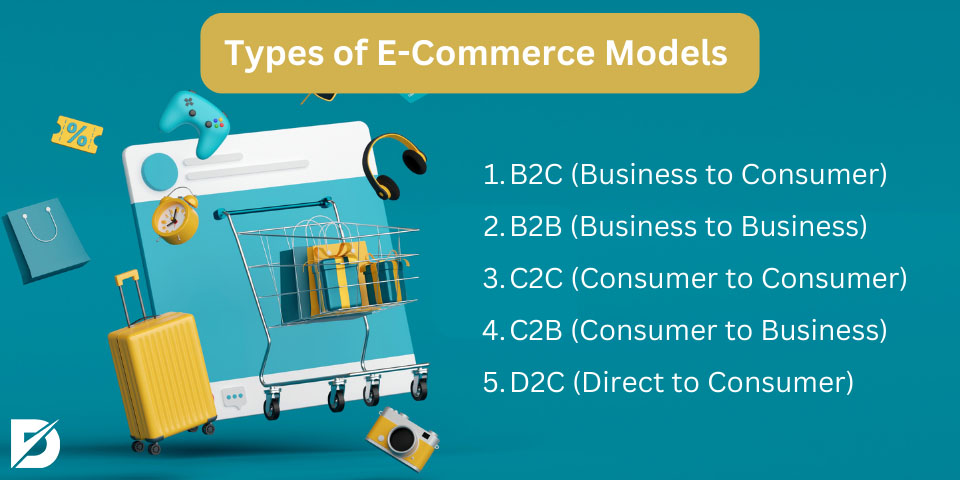
B2C (Business to Consumer)
The business-to-consumer model, or B2C, is the most known model among the e-commerce models. Online retailers such as Amazon, Walmart, and various fashion brands offer their products to the general public. In this model, businesses sell their products directly to individual consumers. In this model, companies create user-friendly websites, effective marketing, and personalized shopping experiences.
B2B (Business to Business)
B2B e-commerce business means that there are transactions between businesses. Bulk orders and specialized products or services often characterize this model. For instance, think about the manufacturers that sell raw materials to other businesses or a software company that offers its products to other enterprises. B2B e-commerce platforms focus on streamlining procurement processes and providing business-specific solutions.
C2C (Consumer to Consumer)
In this model, individual consumers can buy and sell products or services to each other through online platforms. Auction sites like eBay and classified ads websites such as Craiglist are prime examples of the consumer-to-consumer model. These platforms facilitate peer-to-peer transactions, where individuals can list items for sale and negotiate prices directly with other consumers.
C2B (Consumer to Business)
The C2B model allows individual consumers to offer their products or services to businesses. This model is gaining popularity with the rise of freelancing and the gig economy. For instance, freelance writers, graphic designers, and consultants can offer their services to companies seeking expertise. Crowdsourcing platforms and influencer marketing are also examples of C2B e-commerce.
D2C (Direct to Consumer)
This model has gained significant momentum in recent years. D2C brands focus on creating compelling online shopping experiences. In this model, brands bypass retail intermediates, such as wholesalers and brick-and-mortar stores, to sell their products directly to consumers through online channels. They leverage social media marketing and collect customer data to tailor products and marketing efforts. With these, brands can have better control over pricing, branding, and customer feedback.
Key Components of an E-Commerce Business
“Key components of an e-commerce business” is the most crucial topic in this e-commerce guide. Once you’ve decided which model to proceed with, these components will help you create the best shopping experience between your business and your customers, laying the foundation for your online commerce. Let’s take a closer look at these:
Website Design & User Experience
The design of your website and the overall user experience are important details to be successful in the e-commerce business. Your e-commerce website is the virtual storefront where customers interact with your brand. Below, we listed key considerations in this regard:
- User-Friendly Interface: Ensure to have a user-friendly interface. Customers should find what they need and navigate through stores. They should find important info such as pricing, shipping, or return policies.
- Responsive Design: Today, most people use their mobile tools. It is essential that your website is responsive and optimized for various devices, including smartphones and tablets.
- Visual Appeal: Your websites must attract customers and align with your brand’s identity.
- Page Loading Speed: Slow-loading pages can deter consumers. You should optimize your website’s loading speed to reduce bounce rates.
- Mobile-Friendly Experience: Mobile commerce is on the rise. Ensure your website has clickable buttons and a streamlined checkout process for mobile users. You can use Dopinger’s mobile-friendly test tool.
- Clear Navigation: It is important to simplify the navigation menu to help users find what they’re looking for quickly. You can use clear categories and subcategories.
- Trust and Security: If customers can’t trust you, you will lose them. Building trust with your customers is crucial. You can display trust signals such as security badges, customer reviews, and clear privacy policies.
- A/B Testing: Regularly conduct A/B testing to fine-tune your website’s design and user experience. You can test different elements like button colors, call-to-action placement, and product page layouts.
- Customer Feedback: You should listen to your customers’ feedback. You can make improvements based on their suggestions. Their reviews or surveys can provide valuable insights.
Product Listings
A well-organized product listing is the heart of your e-commerce business. This is where you present your offerings, which means it plays an important role in driving sales and conversions. Product listings have two main key components. Let’s check them:
Product Photography and Descriptions
To sell your service or products, you must show them to your customers. Your products need to shine on your e-commerce platform, and that starts with high-quality and captivating photography. High-quality product photographs put a professional touch on your business and showcase your products with the best light possible. You can use multiple images with various angles to display, and consider having zoom features for customers. Add detailed and informative product descriptions. Describe the features, specifications, and benefits of each product. It is better to use persuasive language to highlight what makes your products unique. You can answer common customer questions within your descriptions to provide a comprehensive shopping experience.
Pricing Strategies
Sometimes, the pricing is the only thing customers check to buy a product. This makes pricing even more critical. Your pricing strategies should not only cover the cost of goods but also consider factors like competition, perceived value, and profit margins.
You can research your competitors and analyze their strategies. Determine if you want to position your products as budget-friendly, Premium, or somewhere between. Remember, competitive pricing can help you attract price-conscious customers. In addition to competitive pricing, you should be transparent about your pricing. It can include additional costs such as shipping fees or taxes. Customers appreciate clarity and honesty when it comes to pricing.
Checkout Process
The checkout process is when the purchase is completed, and payment is made. In general, customers are most concerned about this stage; they want to be sure whether they are shopping from a trustworthy website. This makes the checkout process a pivotal point for your e-commerce business. This stage must be clear and user-friendly for customers. We look closer at the checkout process with two key aspects in our e-commerce guide: “Secure Payment Gateways” and “Reducing Cart Abandonment.”
Secure Payment Gateways
To build customer confidence, it is essential to ensure a secure and trustworthy payment process, as we mentioned. You can select reputable payment gateway providers and integrate them seamlessly into your e-commerce platform. There are popular options, such as PayPal and alternatives to PayPal like Stripe, and Square. They offer secure payment processing and various payment methods.
In addition to them, you can implement SSL (Secure Socket Layer) encryption to safeguard customer data during the payment process. These certificates create a secure connection between your website and customers’ browsers.
Moreover, comply with Payment Card Industry Data Security Standard (PCI DSS) requirements to protect cardholder data. This involves secure storage, transmission, and processing of credit card information.
And finally, you can offer two-factor authentication options for added security. With this, you can add an extra layer of protection to help prevent unauthorized access to customer accounts.
Reducing Cart Abandonment
E-commerce businesses mostly have this challenge. Shoppers often add items to their card but don’t complete the purchase. To combat this issue, you can consider these e-commerce strategies:
- Keep the checkout process simple and concise. Minimize the number of steps to complete a purchase and offer a guest checkout option for users who don’t want to create an account.
- Be transparent about all costs. Surprise fees during checkout can lead to abandonment.
- Use an automated system to remind shoppers with emails who abandon their carts. Emails can include incentives, such as discounts or free shipping, to encourage completion.
- Being mobile-friendly is important, as we mentioned before. Many customers shop on smartphones, so a seamless mobile experience is essential.
- Have multiple payment options such as credit/debit cards, digital wallets, and other popular payment methods.
- And finally, display trust signals, such as having secure payment icons and customer reviews on your e-commerce site.
Marketing and Customer Acquisition
One of the most crucial operations for businesses is undoubtedly marketing. When you market your product effectively, you grow your business. The better the marketing, the more significant the growth. To succeed in e-commerce, you must also reach the right customer with the right marketing techniques at the right time. To achieve this, there are strategies to market your e-commerce site and acquire customers.
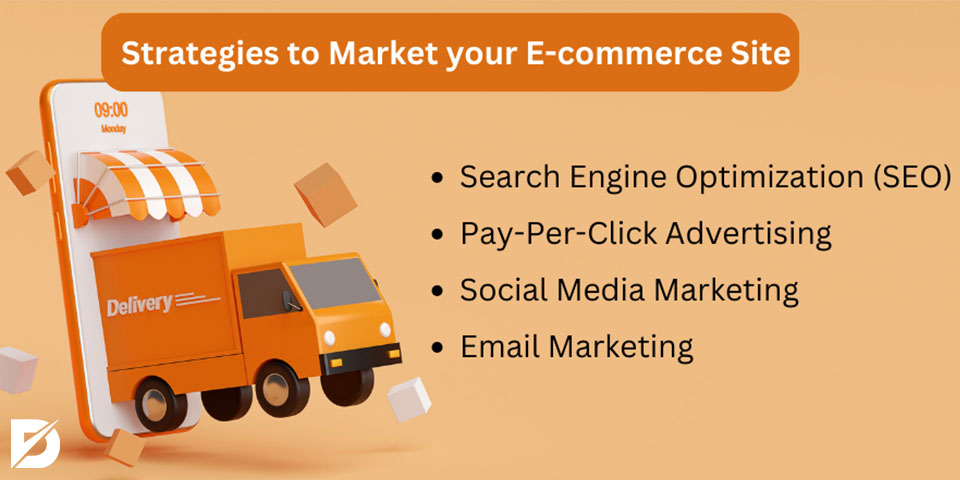
Search Engine Optimization (SEO)
SEO means optimizing your e-commerce site for search engines to increase organic traffic. When a customer searches for a product, he should find you at the top of the search listings. You can do keyword research to see what phrases your potential clients want and then improve your product listings. To be successful in SEO, it is crucial to understand your target audience. Remember, high-quality, informative content not only improves your search rankings but also provides value to your audience.
Pay-Per-Click Advertising
Pay-per-click advertising (PPC) is a digital marketing method in which marketers are charged a fee each time someone clicks on one of their web adverts. This method helps you buy website visits rather than attempting to earn organic visits. With pay-per-click advertising, you only pay when a user clicks on your ad. This makes it a cost-effective way to reach potential customers. So, to attract targeted visitors to your website, you can implement a PPC advertising e-commerce strategy.
Social Media Marketing
Social media has become the most widely used source of entertainment and communication in everyday life. You can leverage this power to connect with your audience and promote your products. Each social media platform has its own strengths; for instance, Instagram is excellent for visual promotion, while Twitter (X) is powerful for real-time engagement and customer support.
Email Marketing
One of the ways to market your product is email marketing. You can use this way to engage with potential and existing customers. Additionally, you can send personalized email campaigns that provide value, such as product recommendations, exclusive offers, and informative newsletters.
Creating Effective Email Campaigns
Since email marketing is a powerful tool, creating effective email campaigns is important. Crafting email campaigns that resonate with your audience is essential for success, of course. You can consider these tips below:
- Divide your email list into segments, such as demographics, purchase history, and engagement level. Send targeted messages to each segment.
- Create valuable and engaging content. This can include product updates, educational content, promotional offers, and personalized recommendations.
- Experiment with different elements of your emails, such as subject lines, visuals, and call-to-action buttons.
- Ensure that your emails are mobile-friendly. Remember, most people use mobile tools.
- Use personalized language. You can address customers by name and recommend products based on their preferences and behavior.
- Clear calls to action are important. They guide customers on the desired action, whether purchasing, reading a blog post, or signing up for a webinar.
- As with every marketing technique on the internet, timing is important, too. Test different sending times and days to determine when your customers are most responsive.
- Analyze the email marketing data of your e-commerce business. These data help you refine your email strategies over time. You can track open rates, click-through rates, and conversions.
E-Commerce Technologies and Platforms
E-commerce means a dynamic world where technology and platforms engage. To stay ahead, you should understand this engagement and harness the right technologies and platforms to empower your online business. You can robust your e-commerce business with software solutions or cutting-edge technologies such as artificial intelligence or augmented reality. In this section of our e-commerce guide, we will explore those.
Popular E-Commerce Platforms
E-commerce platforms are the platforms where you can establish your e-commerce business. If you want to design and create your very own e-commerce site, you can do it. However, it needs time, effort, and budget. These platforms provide the foundation of your online store with essential features to manage products, process payments, and engage with customers. This pre-ready system helps you to save time. Whether you’re a small boutique or a large enterprise, understanding these platforms can guide you in making informed decisions for your e-commerce journey.
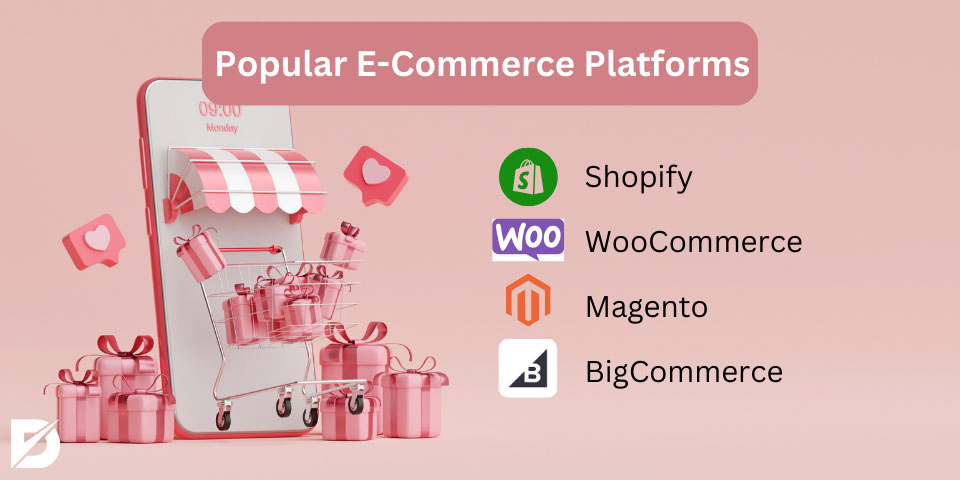
Shopify
Shopify was established in 2006 and is renowned for its user-friendly interface and swift setup, which makes it an ideal choice for e-commerce businesses.
Advantages:
- This e-commerce site stands out with its simple, user-friendly interface and rapid development.
- It offers a large app store with plugins and applications for extensive customization.
- Shopify supports various payment gateways, providing convenience for customers.
Disadvantages:
- It requires a subscription fee, which can add up for businesses.
- Some businesses with specific design requirements may face limitations.
WooCommerce
WooCommerce was founded in 2011. This website aims to seamlessly integrate e-commerce capabilities into WordPress-based websites.
Advantages:
- WordPress integration. It smoothly integrates with WordPress websites.
- WooCommerce boasts a vast plugin ecosystem for customization.
- It is known for its SEO-friendly features; it helps online visibility.
Disadvantages:
- You must have a WordPress website to use it.
- Unlike hosting platforms, you’re responsible for hosting and security.
Magento
Magento was established in 2008 and targets businesses seeking comprehensive e-commerce solutions with advanced features.
Advantages:
- It offers an open-source edition, which allows users to have extensive customization.
- Magento is suitable for large enterprises with scalability needs.
- It provides a wide range of features, ideal for complex e-commerce operations.
Disadvantages:
- It can be complex for beginners.
- It may require substantial server resources and development expertise.
BigCommerce
Founded in 2009. BigCommerce provides a user-friendly e-commerce platform known for its flexibility and scalability.
Advantages:
- User-friendly interface which is suitable for all skill levels.
- It’s well-suited for businesses aiming for growth and expansion.
- It has hosting that simplifies the setup.
Disadvantages:
- Its pricing can become significant as your business grows.
- Some advanced features may need third-party apps.
Integrating with Third-Party Applications
We can explain “third-party applications” as software programs or applications. These are developed and provided by external parties or vendors rather than the e-commerce business or platform itself. They are created to extend the functionality of an e-commerce platform, which means that they provide additional features, tools, or services. These platforms often enhance various aspects of e-commerce operations, such as:
CRM
CRM means Customer Relationship Management. E-commerce businesses can integrate this third-party software to better manage customer interactions. It helps you to view customer behavior and preferences and to enable personalized marketing and improved customer service. To be successful with this software, ensure that the CRM system is compatible with your e-commerce site.
Inventory Management and Payment Gateways
Successful management of inventory and secure payment options are essential for e-commerce success. With a specialized inventory management application, you can efficiently track and manage your product inventory, monitor stock levels, and automate reorder processes. These applications allow you to real-time tracking of stock levels and product availability. Additionally, third-party payment gateways enable secure and diverse customer payment options, such as credit card processing, digital wallets, and more. With this, you can build trust and loyal customer relations.
Legal and Compliance Aspects
E-commerce business requires a careful establishment. You must be able to navigate the legal and compliance landscape. It is important to understand key areas such as data privacy, return policies, and tax considerations to ensure a smooth and lawful operation. Let’s check them:
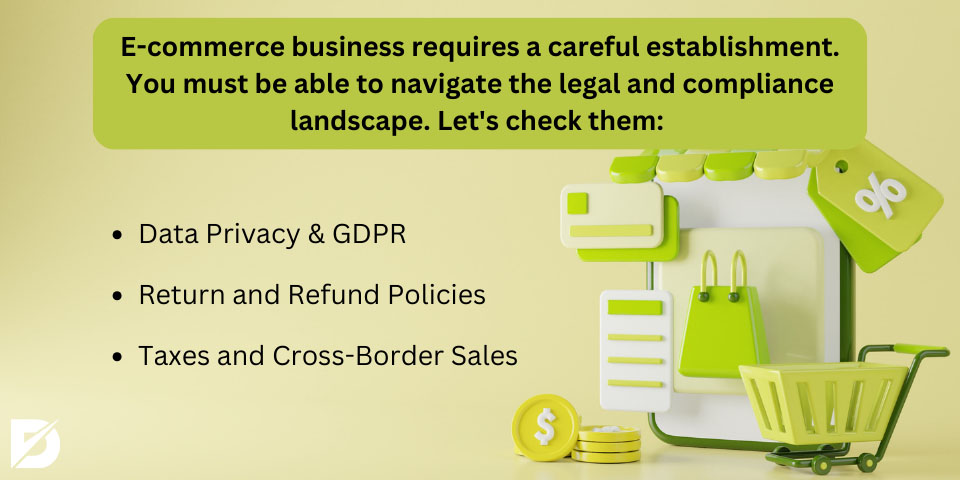
Data Privacy & GDPR
Privacy means privacy, so you must protect your customers’ data by adhering to regulations like GDPR, which stands for General Data Protection Regulation. It refers to a set of laws and regulations in the European Union concerning the processing and protection of personal Data. As its name suggests, it’s designed to protect the personal data of individuals within the EU and European Economic Area (EEA). It also applies to organizations outside the EU/EEA that process the personal data of EU/EEA residents.
For data privacy and GDPR, you can ensure that you have clear and informed consent from customers to collect and process their personal data. You can allow customers to access, correct, or delete their data upon request. If you sell to European customers, comply with GDPR.
Return and Refund Policies
If there is an ugly face in ecommerce, it is the return and refund processes. You must craft clear and customer-friendly return and refund policies to manage customer expectations and satisfaction. To be successful in these, you must be transparent. Clearly communicate your return and refund policies to customers on your website. It is better to have flexible refund options for customer satisfaction. You can make the return process as simple as possible for customers and provide responsive customer support to handle return and refund inquiries.
Taxes and Cross-Border Sales
Taxes and cross-border sales can be complex at the beginning, especially when you are selling products internationally. Understanding tax obligations is essential to avoid legal issues. You must remember that you should be aware of your tax nexus. This determines where you’re required to collect and remit taxes. Understand Value Added Tax (VAT) and Goods and Services Tax (GST) regulations for cross-border sales. You can consider tax automation software to manage tax calculations and filings.
Customer Service in E-Commerce
Even if a tiny problem of a customer is solved by your customer service, you gain a happy customer. This leads to building trust between you and the customer. Your ability to meet customer needs, resolve issues promptly, and create positive shopping ecommerce experiences can set you apart.
Importance of Customer Support
We can say that customer support is the bedrock of effective ecommerce success. It fosters loyalty and encourages repeat business. Also, it shapes your brand’s reputation and how customers perceive your business. It is important since it can prevent potential negative reviews. Moreover, superior service can differentiate your e-commerce shopping business in a crowded market.
Live-Chat and Chatbots
Probably, see the small windows that pop up at the bottom of a website. They allow real-time, text-based communication between customers and customer service representatives. Customers can initiate conversations with support staff. This creates the ultimate customer satisfaction since customers can have answers in real-time.
Chatbots, on the other hand, are automated software programs. They are designed to simulate human conversation. They can interact with users through text-based or voice-based interfaces. Chatbots provide responses and assistance based on pre-defined rules or artificial intelligence algorithms.
With the help of these tools, you can communicate instantly with customers, addressing queries and concerns promptly. Chatbots also offer 24/7 support, saving time by automating routine inquiries and freeing up human agents for complex tasks.
Handling Returns and Complaints
Not every business is perfect; they can have mistakes, or you can’t make everybody happy. These positions can make businesses have challenging times. You must be a professional and try to solve the problems immediately with a positive customer approach. To handle these, you can establish transparent return policies. It is important to streamline return procedures to ensure hassle-free experiences for customers. In addition to that, you can develop protocols for addressing and resolving customer complaints swiftly. Use those complaints as feedback, identify areas for improvement, and enhance your e-commerce business.
Future Trends in E-Commerce
If you want an effective e-commerce process, you must know new long-term development and competitiveness trends. Like technology, the e-commerce world is evolving, and recognizing these trends will help you shape your company’s future. In our e-commerce guide, we focus on two trends that can change the way you build online shop.
Rise of Mobile Commerce
In short, it is m-commerce and has been on the rise, reshaping how consumers shop online. People increasingly use smartphones and tablets for shopping. This makes creating e-commerce sites mobile-friendly crucial to adapt to this mobile-first era. Because of this, you need to provide mobile payment solutions at the same time. There are mobile wallets and payment apps for this, such as Apple Pay and Google Pay. In addition to these, consider developing app-based shopping experiences a step further. Mobile apps offer a more user-friendly interface and provide opportunities for targeted marketing. In this mobile-driven future of e-commerce, you must keep up with the new trends to remain competitive.
Augmented Reality (AR) and Virtual Reality (VR) in Shopping
For AR and VR, we can say that they are the new dimension of shopping. They are the bridge of the gap between physical and digital shopping. For instance, think about virtual try-ons. They are powered by Augmented Reality technology, enabling customers to visualize e-commerce products, such as clothing, eyewear, and makeup, before purchasing. This interactive experience enhances customer confidence and reduces uncertainty.
Virtual Reality, on the other hand, transforms the way products are showcased. Customers can explore products in a virtual environment and simulate the experience of being in a physical store. This immersion can be especially appealing for big-ticket items.
Both AR and VR provide enhanced product visualization that allows customers to view products in three dimensions. They can interact with products virtually. This aids in better understanding product features and functionality. Furthermore, these experiences can significantly reduce returns. This adoption of AR and VR in e-commerce is more than just a trend; it’s a transformative shift that enriches the online shopping experience and empowers consumers to make informed decisions.
As a Conclusion in this E-Commerce Guide
We have learned how to create an e-commerce business with important details. You’ve seen the important details in this e-commerce guide to be a step forward. Remember, success revolves around adaptability, innovation, and unwavering dedication to customer satisfaction.
Our other articles about e-commerce:
- Best E-Commerce Practices
- Best E-Commerce Product Page Practices
- What Is E-Commerce Conversion Rate
- Best E-Commerce Platforms for Your Online Store
- How to Increase E-Commerce Sales
Frequently Asked Questions About
It means buying and selling products over the internet.
While both serve consumers, B2C typically involves established brands selling to end-users, whereas D2C allows brands to sell directly to consumers without intermediaries
It is crucial since it ensures your site functions seamlessly on smartphones and tablets. With the rise of mobile commerce, it provides a user-friendly experience, improves SEO rankings, and expands your reach to mobile-savvy customers.
You can create targeted and engaging email campaigns. Focus on building a quality email list and personalized content. Segmenting your audience will be helpful for this. It is better to send relevant promotions or product recommendations.
This can require a niche focus, exceptional customer service, unique product offerings, competitive pricing, and effective digital marketing. Building a loyal customer base and emphasizing your brand’s strength can set you apart.


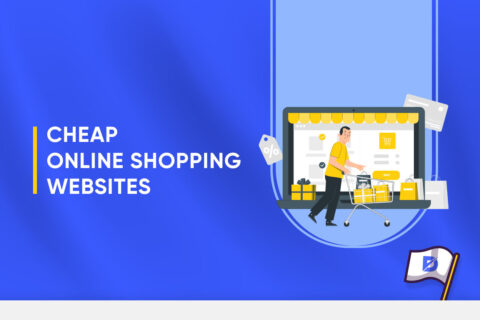
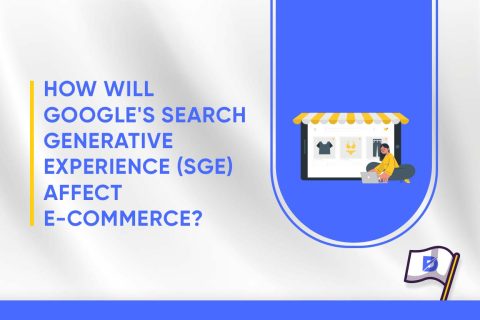
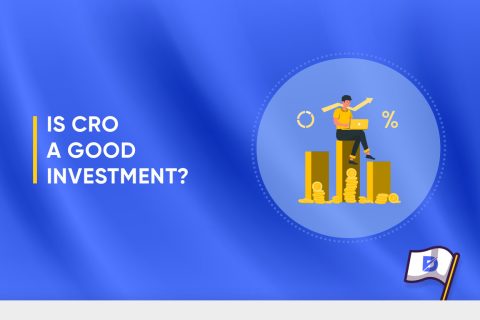
No comments to show.